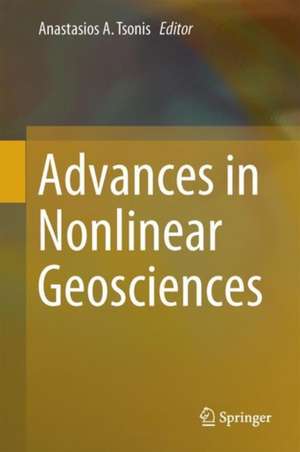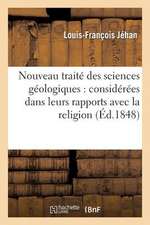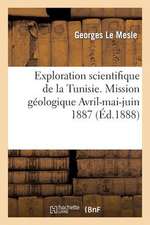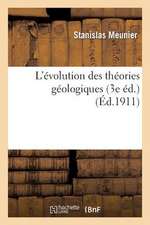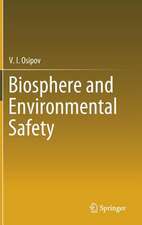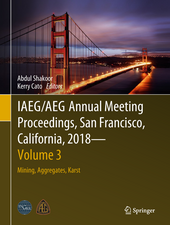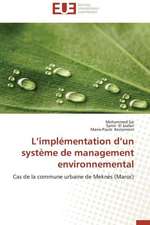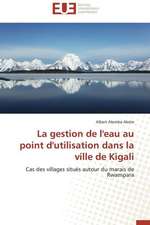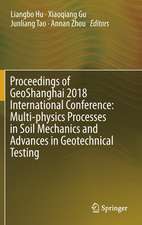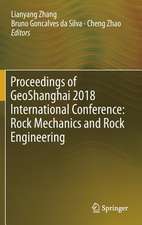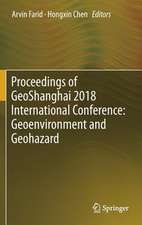Advances in Nonlinear Geosciences
Editat de Anastasios A. Tsonisen Limba Engleză Hardback – 24 oct 2017
| Toate formatele și edițiile | Preț | Express |
|---|---|---|
| Paperback (1) | 966.27 lei 6-8 săpt. | |
| Springer International Publishing – 17 mai 2018 | 966.27 lei 6-8 săpt. | |
| Hardback (1) | 971.32 lei 6-8 săpt. | |
| Springer International Publishing – 24 oct 2017 | 971.32 lei 6-8 săpt. |
Preț: 971.32 lei
Preț vechi: 1184.55 lei
-18% Nou
Puncte Express: 1457
Preț estimativ în valută:
185.88€ • 201.84$ • 156.14£
185.88€ • 201.84$ • 156.14£
Carte tipărită la comandă
Livrare economică 23 aprilie-07 mai
Preluare comenzi: 021 569.72.76
Specificații
ISBN-13: 9783319588940
ISBN-10: 331958894X
Pagini: 633
Ilustrații: XIX, 707 p. 366 illus., 263 illus. in color.
Dimensiuni: 155 x 235 mm
Greutate: 1.19 kg
Ediția:1st ed. 2018
Editura: Springer International Publishing
Colecția Springer
Locul publicării:Cham, Switzerland
ISBN-10: 331958894X
Pagini: 633
Ilustrații: XIX, 707 p. 366 illus., 263 illus. in color.
Dimensiuni: 155 x 235 mm
Greutate: 1.19 kg
Ediția:1st ed. 2018
Editura: Springer International Publishing
Colecția Springer
Locul publicării:Cham, Switzerland
Cuprins
1.Pullback attractor crisis in a delay differential ENSO model.- 2.Shear-wave splitting indicates non-linear dynamic deformation in the crust and upper mantle.- 3.Stochastic parameterization of subgrid-scale processes: A review of recent physically-based approaches.- 4.Large-scale atmospheric phenomena under the lens of ordinal time-series analysis and information theory measures.- 5.Supermodeling: Synchronization of alternate dynamical models of a single.- 6.Are We Measuring the Right Things for Climate?.- 7.What have complex network approaches learned us about El Niño?.- 8.Late Quaternary climate response at 100 kyr: A noise-induced cycle suppression mechanism.- 9.Role of nonlinear eddy forcing in the dynamics of multiple zonal jets.- 10.Data-adaptive Harmonic Decomposition and Stochastic Modeling of Arctic Sea Ice.- 11.Cautionary remarks on the auto-correlation analysis of self-similar time series.- 12.Emergence of Coherent Clusters in the Ocean.- 13.The Rise and Fall of Thermodynamic Complexity and the Arrow of Time.- 14.From fractals to stochastics: Seeking theoretical consistency in analysis of geophysical data.- 15.Role of nonlinear dynamics in accelerated warming of Great Lakes.- 16.The Prediction of Nonlinear Polar Motion based on Artificial Neural Network (ANN) and Fuzzy Inference System (FIS) .- 17.Harnessing butterflies: theory and practice of the Stochastic Seasonal to Interannual Prediction System (StocSIPS).- 18.Regime change detection in irregularly sampled time series.- 19.Topological Data Analysis: Developments and Applications.- 20.Nonlinear dynamical approach to atmospheric predictability.- 21.Linked by dynamics: wavelet–based mutual information rate as a connectivity measure and scale-specific networks.- 22.Non-Extensive Statistical Mechanics: Overview of Theory and Applications in Seismogenesis, Climate, and Space Plasma.- 23.Spatial Patterns of Peak Flow Quantiles Based on Power-Law Scaling in the Mississippi River Basin.- 24.Studying theComplexity of Rainfall within California via a Fractal Geometric Method.- 25.Pandora box of multifractals: barely open?.- 26.Complex networks and hydrologic applications.- 27.Convergent Cross Mapping: Theory and an Example.- 28.Randomnicity: randomness as a property of the universe.- 29.Insights in climate dynamics from climate networks.- 30.On the range of frequencies of intrinsic climate oscillations.- 31.The prediction of non-stationary climate series by incorporating external forces.- 32.The impact of nonlinearity on the targeted observations for tropical cyclone prediction
Notă biografică
Dr. Anastasios Tsonis is Distinguished Professor Emeritus with the Department of Mathematical Sciences at the University of Wisconsin-Milwaukee, WI, USA. He is also Adjunct Research Scientist at the Hydrologic Research Center in San Diego, CA, USA.
Textul de pe ultima copertă
Advances in Nonlinear Geosciences is a set of contributions from the participants of “30 Years of Nonlinear Dynamics” held July 3-8, 2016 in Rhodes, Greece as part of the Aegean Conferences, as well as from several other experts in the field who could not attend the meeting. The volume brings together up-to-date research from the atmospheric sciences, hydrology, geology, and other areas of geosciences and presents the new advances made in the last 10 years. Topics include chaos synchronization, topological data analysis, new insights on fractals, multifractals and stochasticity, climate dynamics, extreme events, complexity, and causality, among other topics.
Caracteristici
Discusses the past and future application of nonlinear dynamics in geosciences Includes the most up-to-date research in nonlinear dynamics Illustrated throughout Includes supplementary material: sn.pub/extras
